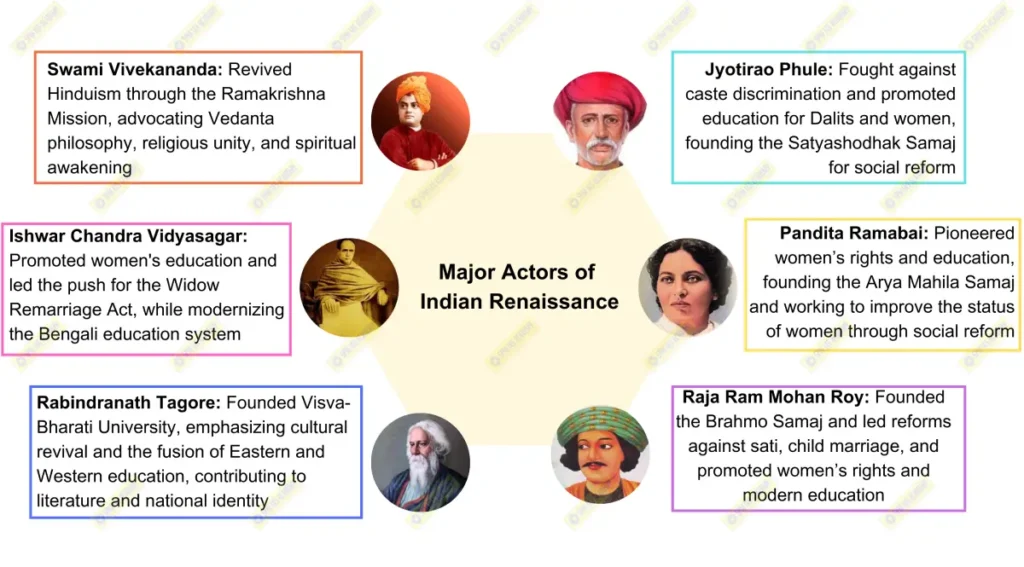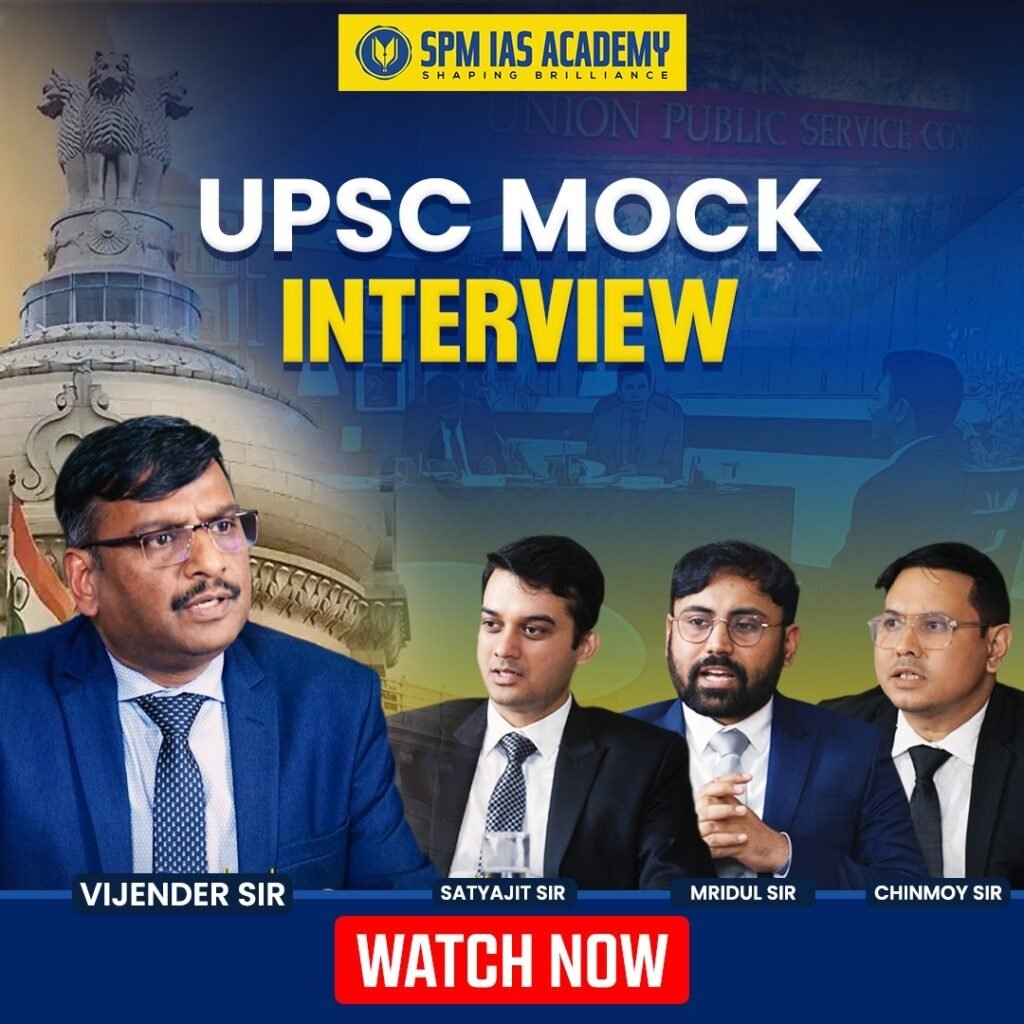The Indian Renaissance refers to the cultural, social, religious, and intellectual awakening that occurred in India during the 19th and early 20th centuries. It was marked by a revival of Indian heritage, reforms to address social evils, and the promotion of modern education, science, and rationality. The movement drew inspiration from both Indian traditions and Western thought, and was led by prominent reformers, thinkers, and leaders who sought to balance tradition with modernity.
A. Social and Religious Reforms:
- The Indian Renaissance was deeply rooted in social and religious reforms, challenging practices like sati, child marriage, and the caste system.
- Raja Ram Mohan Roy, often called the “Father of the Indian Renaissance,” founded the Brahmo Samaj in 1828 to promote monotheism, oppose idol worship, and fight social evils. He said, “The only way to protect religion is to reform it.”
- Swami Vivekananda inspired a revival of Hinduism through the Ramakrishna Mission, emphasizing the universal truth of Vedanta and the unity of all religions. He famously said, “Arise, awake, and stop not till the goal is reached,” calling for self-awakening and national reform.
B. Revival of Indian Cultural Heritage:
- The movement aimed to revive and reinterpret India’s ancient culture, philosophy, and values in the face of colonial domination. Intellectuals and reformers sought to reconnect with India’s spiritual and cultural roots.
- Rabindranath Tagore, a Nobel laureate in literature, was a major figure in this cultural revival. Through his works, he stressed the importance of freedom of the mind and India’s rich heritage, asserting, “A mind all logic is like a knife all blade. It makes the hand bleed that uses it.”
- Bankim Chandra Chattopadhyay, through his novel Anandamath, promoted the spirit of nationalism, and his composition “Vande Mataram” became a rallying cry for Indian independence.
C. Modern Education and Rational Thought:
- Reformers of the Indian Renaissance recognized the importance of modern education and scientific inquiry in uplifting Indian society. They believed education was the key to challenging superstitions and colonial subjugation.
- Ishwar Chandra Vidyasagar, a social reformer and educationist, advocated for the spread of Western education among women and the marginalized. He was instrumental in promoting widow remarriage and improving the status of women through education. He remarked, “No one is truly educated who cannot use his knowledge in daily life.”
- Jyotirao Phule, a pioneer in Dalit education, founded schools for girls and the oppressed communities, emphasizing the need for education to combat caste-based discrimination.
D. Women’s Empowerment:
- The Indian Renaissance also focused on women’s rights and empowerment, challenging the deeply entrenched patriarchy and social customs that oppressed women.
- Pandita Ramabai, a leading social reformer and advocate for women’s education, fought for women’s rights and founded the Arya Mahila Samaj. She emphasized the need for reform, saying, “There is no hope of reforming society except by educating the women.”
- Sarojini Naidu, known as the “Nightingale of India,” became a voice for women’s rights and played a significant role in the freedom struggle, bridging the gap between social reforms and political activism.
E. Rise of Nationalism:
- The Renaissance movement fostered a sense of national identity and pride in India’s heritage, which contributed to the growth of Indian nationalism and the fight against colonial rule.
- Bal Gangadhar Tilak, with his famous slogan, “Swaraj is my birthright and I shall have it,” ignited the spirit of self-rule and patriotism among Indians. He linked India’s cultural revival with political independence, urging Indians to reclaim their national identity.
- Mahatma Gandhi emphasized the integration of Indian values with modern ideas of freedom and equality, guiding the nation through his principles of non-violence (Ahimsa) and truth (Satya).
F. Scientific and Rational Thinking:
- The Renaissance movement encouraged a scientific temper and rational thinking, moving away from superstition and blind faith.
- Sir Jagadish Chandra Bose, a pioneer in modern science, and C.V. Raman, India’s first Nobel laureate in science, were part of this broader intellectual awakening. Their contributions to botany and physics underscored the importance of scientific advancement in India’s growth.
- Gopal Krishna Gokhale promoted rational discourse, stating, “The paths of glory lead but to the grave, but the paths of duty lead to the happiness of mankind.”
The Indian Renaissance was a transformative period that combined social reforms, cultural revival, education, and nationalism, shaping modern India. Personalities like Raja Ram Mohan Roy, Swami Vivekananda, Tagore, and others played pivotal roles in challenging outdated practices while promoting a blend of tradition and modernity. This movement laid the foundation for India’s freedom struggle and continues to inspire contemporary efforts towards progress and social justice.












